Fire safety is a critical concern for everyone, from homeowners to business operators. Understanding the right steps to take can significantly reduce the risk of fire and its devastating consequences.
This blog post outlines seven simple yet effective steps for fire safety, ensuring you’re well-equipped to protect yourself, your loved ones, and your property.
Step 1: Install and Maintain Smoke Alarms
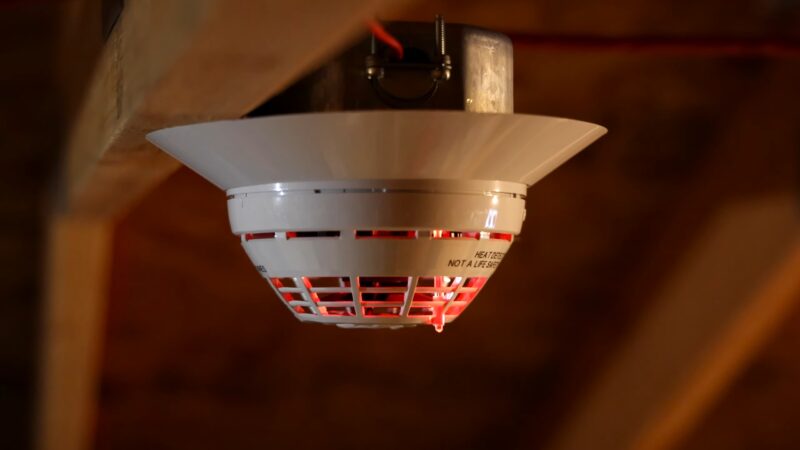
Smoke alarms are your first line of defense in fire safety. They provide an early warning, allowing you and your family time to escape in case of a fire.
Importance of Regular Maintenance
- Regular Checks: Test your smoke alarms monthly by pressing the test button.
- Battery Replacement: Replace batteries at least once a year, even if they seem to be working fine.
- Replacement of Alarms: Smoke alarms have a lifespan of about 10 years. Replace them accordingly to ensure they function effectively.
Ideal Placement of Smoke Alarms
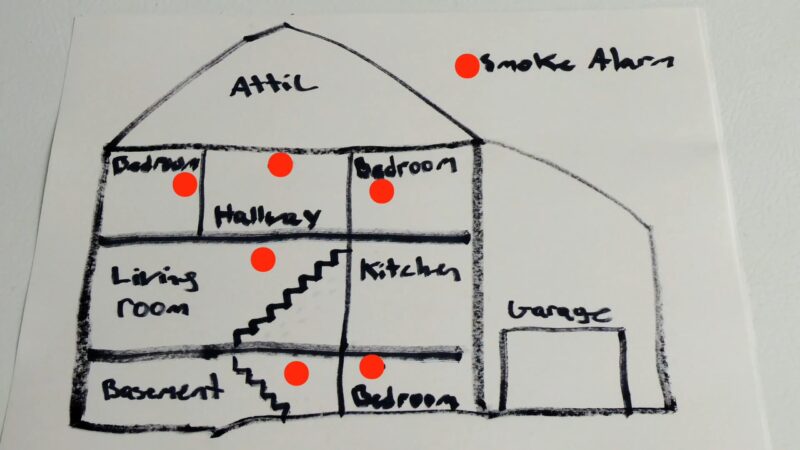
- In Every Bedroom: Ensure there’s a smoke alarm in each bedroom and outside sleeping areas.
- On Every Level: Install alarms on every level of your home, including the basement.
- Avoid Kitchens: Place smoke alarms at least 10 feet from cooking appliances to reduce false alarms.
Step 2: Plan and Practice an Escape Route
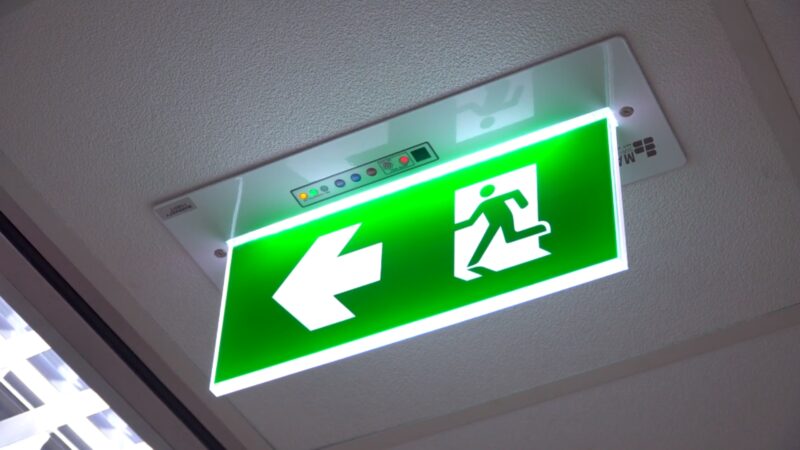
Having a well-thought-out escape plan is crucial in a fire emergency. This plan should be clear and practiced regularly.
Key Elements of an Escape Plan
- Two Exits per Room: Ensure that every room has at least two exits, including windows and doors.
- Clear Pathways: Keep all escape routes clear of furniture and clutter.
- Designate a Meeting Point: Choose a safe spot outside your home where everyone will meet after escaping.
Practicing the Escape Plan
- Regular Drills: Conduct fire drills at least twice a year.
- Involving Children: Teach children how to escape on their own in case you can’t help them.
- Nighttime Drills: Practice escape plans at night as fires can occur any time.
Step 3: Understand and Use Fire Extinguishers Properly
Different types of fires require different types of extinguishers. It’s essential to know which type is suitable for your home or workplace.
The PASS Technique
- Pull: Pull the pin to break the tamper seal.
- Aim: Aim low, pointing the extinguisher nozzle at the base of the fire.
- Squeeze: Squeeze the handle to release the extinguishing agent.
- Sweep: Sweep from side to side at the base of the fire until it’s out.
Choosing the Right Extinguisher
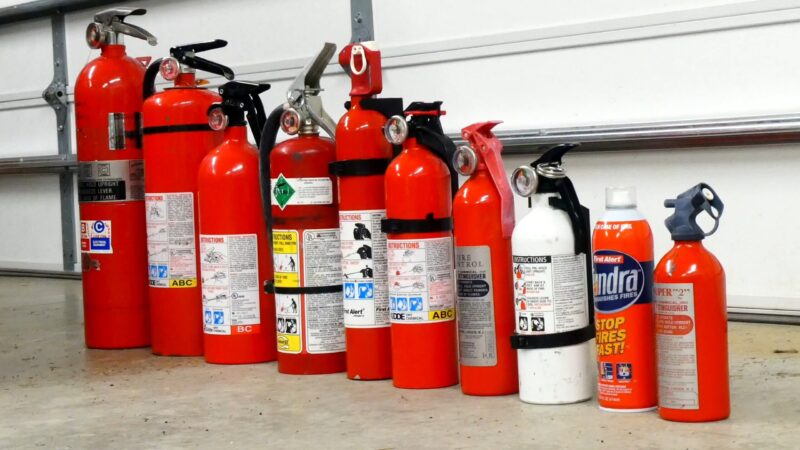
- Class A: For ordinary combustibles like wood and paper.
- Class B: For flammable liquids like oil and gasoline.
- Class C: For electrical fires.
Regular Maintenance of Fire Extinguishers
- Inspection: Check the gauge monthly to ensure it’s charged.
- Professional Check: Have it inspected by a professional annually.
- Accessibility: Keep extinguishers in an easily accessible location, away from potential fire sources.
Step 4: Practice Safe Cooking Habits
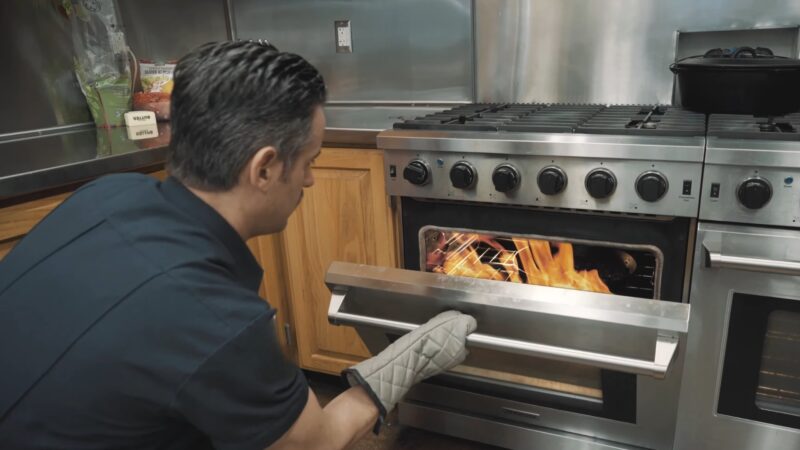
The kitchen is a common site for home fires, often due to cooking. Practicing safe cooking habits is essential to prevent these fires.
Safe Cooking Practices
- Never Leave Cooking Unattended: Unattended cooking is a leading cause of kitchen fires.
- Keep Flammable Items Away: Ensure no flammable materials like towels or paper bags are near the stove.
- Use a Timer: This helps remind you that you are cooking, especially when you are multitasking.
Responding to Cooking Fires
- Smother Flames: If a small fire starts, smother the flames with a lid or baking soda.
- Turn Off the Heat: If it’s safe to do so, turn off the source of heat.
- Never Use Water on Grease Fires: Water can cause the fire to spread.
Step 5: Ensure Electrical Safety
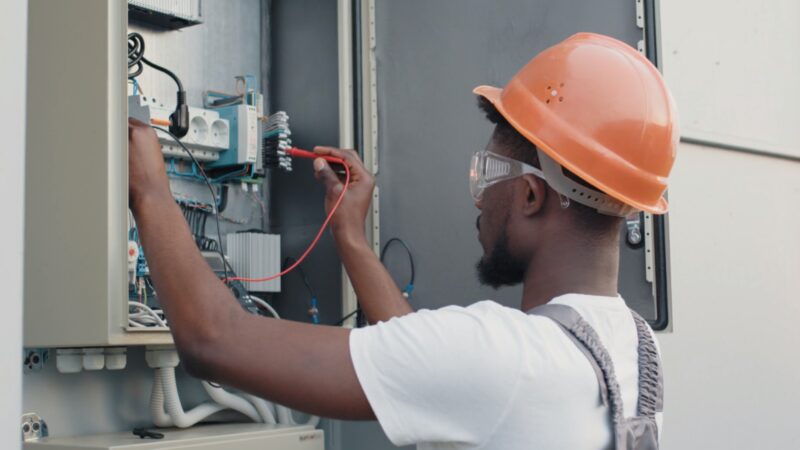
Electrical malfunctions are a significant cause of home fires. Understanding and maintaining electrical safety can prevent these fires.
Maintaining Electrical Safety
- Inspect Electrical Cords: Regularly check cords for damage and replace them if necessary.
- Avoid Overloading Outlets: Plug only one high-wattage appliance into each outlet at a time.
- Use Surge Protectors: They protect against electrical surges that can cause fires.
Safe Use of Electrical Appliances
- Unplug Appliances When Not in Use: This reduces the risk of electrical fires.
- Follow Manufacturer’s Instructions: Always use appliances according to their guidelines.
- Regular Maintenance: Have your home’s electrical system inspected by a professional regularly.
Step 6: Use Caution with Heating Equipment
Heating equipment, like furnaces, fireplaces, and portable heaters, are among the leading causes of home fire deaths. Using these safely is crucial, especially in colder months.
Safe Use of Heating Equipment
- Keep Anything Flammable at Least Three Feet Away: This includes furniture, curtains, and bedding.
- Turn Off Portable Heaters When Leaving the Room: Never leave a space heater on when you are sleeping or away from home.
- Have Heating Equipment and Chimneys Cleaned and Inspected Annually: This should be done by a qualified professional.
Fireplace Safety
- Use a Fireplace Screen: This prevents sparks from flying into the room.
- Extinguish the Fire Before Going to Bed: Ensure the fire is completely out before leaving the room.
- Dispose of Ashes Safely: Wait until ashes are cool before disposing of them in a metal container.
Step 7: Install Fire-Resistant Materials
Using fire-resistant materials in your home can significantly slow the spread of fire, giving you more time to escape.
Using Fire-Resistant Materials in Home Construction
- Fire-Resistant Roofing: Consider using materials like asphalt shingles, metal, slate, or clay tiles.
- Fire-Resistant Walls and Siding: Materials like stucco, plaster, and certain types of brick can help protect your home’s exterior from fire.
- Fire-Resistant Flooring: Materials like ceramic tile and concrete are less likely to catch fire.
Incorporating Fire-Resistant Materials in Home Decor
- Fire-Resistant Fabrics: Use fire-resistant fabrics for curtains and upholstery.
- Fire-Resistant Furniture: Choose furniture that is less likely to catch fire and contribute to the spread of flames.
- Regular Upgrades: As technology advances, consider upgrading to newer, more fire-resistant materials.
FAQ
How can I teach children about fire safety?
Engage children with regular discussions, interactive games, and drills. Teach them to recognize the sound of smoke alarms and practice escape routes with them. There are also many child-friendly resources and videos available that make learning about fire safety fun and memorable.
Are there any specific tips for fire safety in high-rise buildings?
In high-rise buildings, know the location of fire exits and never use elevators during a fire. If you can’t exit the building due to fire or smoke, stay in your apartment, seal the doors and vents with wet towels, and call the fire department.
What should I do if my clothes catch fire?
If your clothes catch fire, remember the “Stop, Drop, and Roll” technique. Stop where you are, drop to the ground, and roll over back and forth until the flames are extinguished, covering your face with your hands to protect it.
How often should I have a professional inspection of my home’s fire safety systems?
It’s recommended to have a professional inspection of your home’s fire safety systems, including alarms and extinguishers, at least once a year.
Can pets trigger smoke alarms?
Pets typically do not trigger smoke alarms, but it’s important to keep smoke alarms free of dust and spider webs to prevent false alarms.
Is it safe to use extension cords permanently?
Extension cords should not be used as a permanent solution. They can easily become overloaded, leading to a fire hazard. Instead, consider having additional outlets installed by a professional.
How can I ensure fire safety during holidays and celebrations?
During holidays, ensure decorations are flame-retardant, avoid overloading electrical outlets with lights, and always blow out candles before leaving a room or going to bed.
Final Words
Fire safety is an ongoing commitment. By incorporating these steps and staying informed, you can create a safer environment for yourself and those around you. Remember, a little precaution goes a long way in preventing devastating fires.
